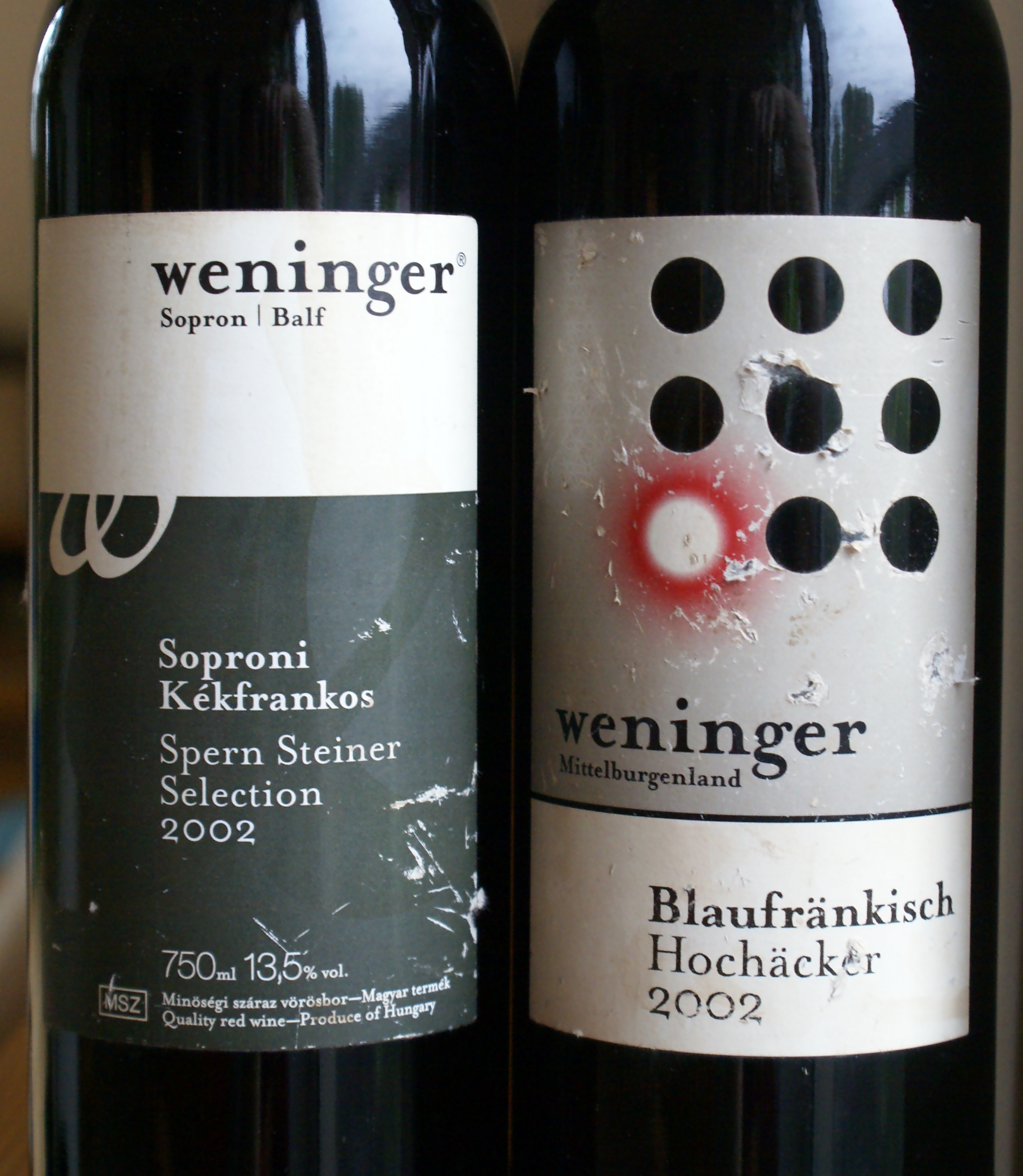Blau & Blau
Posted on 11 June 2011
A reader recently commented on my ancient note (of spring 2009) on an Austrian Blaufränkisch from Weninger. While it’s pretty normal that two human beings disagree on that wine or another, that comment had me thinking whether I’d not been overcritical towards those modern Austrian red wines (while singing the praise of the fresher, more poised style here and here).
So to find out how those wines – and my feeling for them – evolve, I opened two 2002s from Weninger: the mid-priced Blaufränkisch Hochäcker as well as the Kékfrankos Spern Steiner Selection, the top bottling from the Weningers’ winery in Hungary, just opposite the border from their one in Burgenland. The Austrian wine was made by Franz Weninger father while in Hungary, the winemaking is overseen by Franz Jr. (who has now introduced biodynamic farming).
These two wines did actually reinforce rather than revert my opinion. Both are fairly good, but also show the limitations of their style. (The latter has evolved since, and the Weninger reds from 2006 and 2007 are on another level). Although the wines are now in balance, they still show a certain excess of drying tannic extract and nutty-toasted notes of oak. Towards the end of their evolution (both are peaking or just slightly past peak), they have the harmony of a mature wine with balsamic soft vestiges of fruit but they still taste a little stretched and breathless.
It’s especially true of the Spern Steiner Kékfrankos from Hungary’s Sopron. Showing good depth of bitter cherry and blackcurrant fruit, it ends on a wood-dusty, vegetal note that perhaps comes from Hungarian oak (which seems often to be underseasoned, resulting in green vegetal tannins). It’s a serious wine but a bit out of balance. Looking up my notes I see that I was very positive about this wine in 2004 when it showed so much intense fruit, while later tastings were marred by that overextracted / dry tannins impression.
The Hochäcker Blaufränkisch is the better wine of the two, by a margin. (And quite better than the 2001 Blaufränkisch Reserve I criticised two years ago). It is more balanced, subtle and integrated. It still tastes a little dried out, but on the whole it’s more enjoyable, and there is quite some elegance in the airy, crisp cherry profile. One possible explanation is perhaps Franz Sr.’s more assured hand in the winemaking. Overall these two ambitious wines show some class but they also testify to that difficult work-in-progress period in Austrian red winemaking. That period is drawing to an end with universally more balanced wines, and it’s a good thing.
Disclosure
Both wines were tasting samples I received from the winery back in summer 2004 and that I’ve cellared since.


